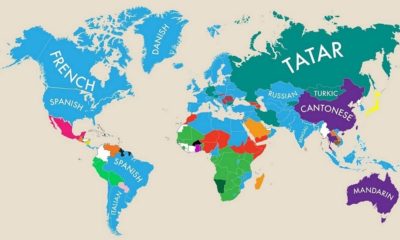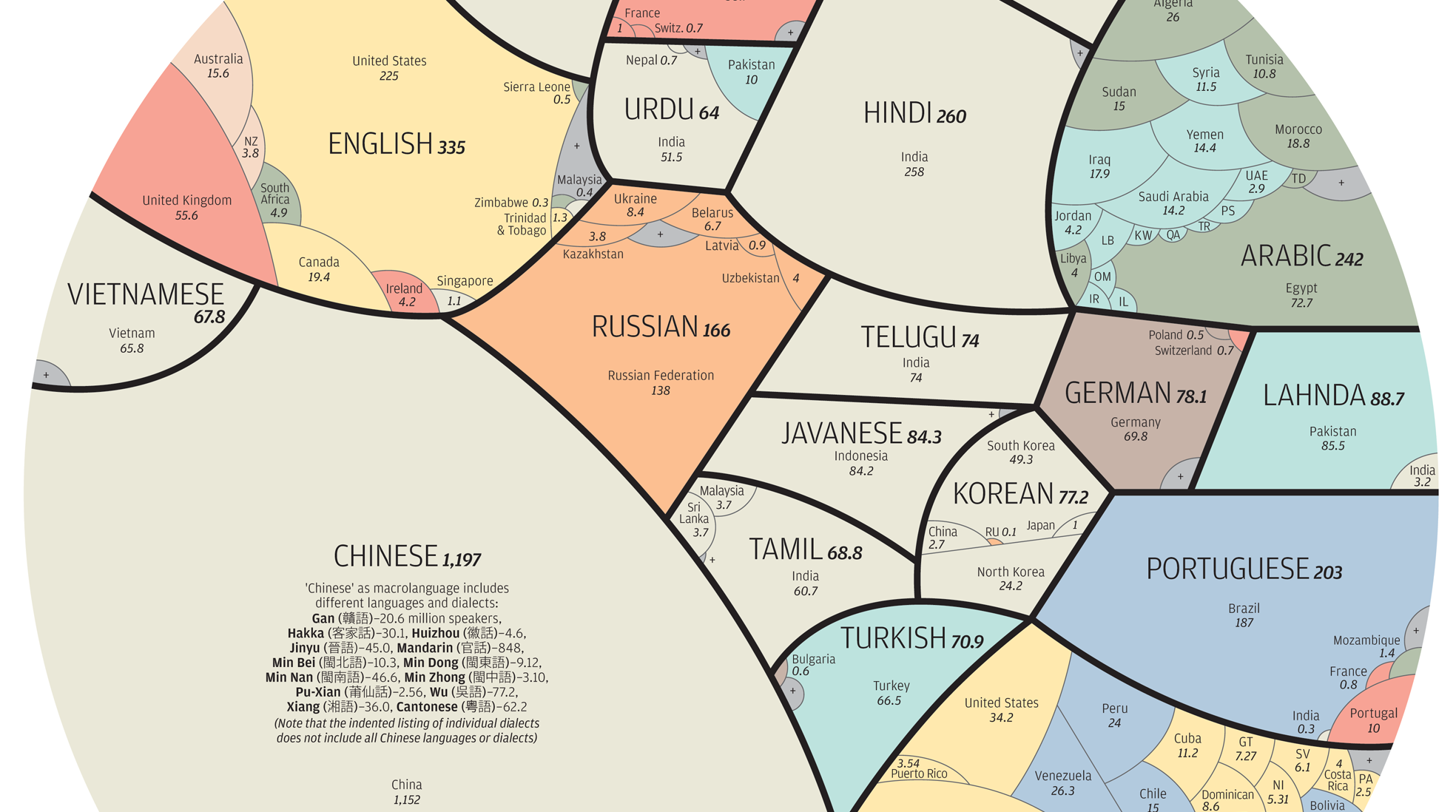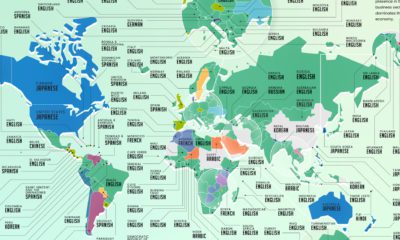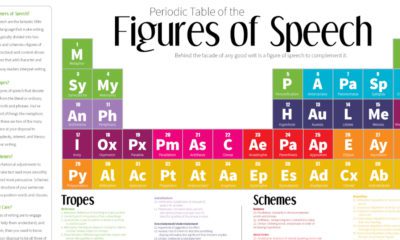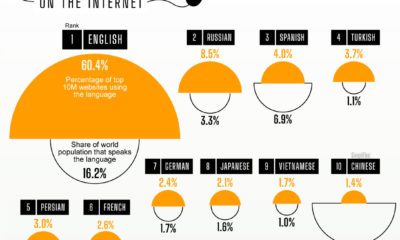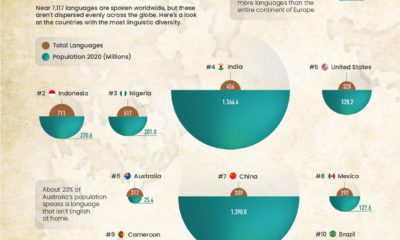The U.S. Census Bureau’s American Community Survey (ACS) annually asks more than 1 million Americans questions about their lives, families, and backgrounds. One question asks respondents what language they mainly speak in their homes. Migration Policy has used this data (while excluding English and Spanish) to leave us with the next-most-frequently spoken languages at home in each state.
Non-English Languages in the U.S.
In 2019, approximately 78% (241 million) of all 308.8 million people ages five and older reported speaking only English at home regardless of their nativity. The remaining 22% (67.8 million) reported speaking a language other than English at home. Based on this data, Mandarin and Cantonese were the most common non-English, non-Spanish languages spoken in the U.S., with more than 3.4 million speakers across the country. Here is a list of the most common languages spoken at home in the U.S., outside of English: Tagalog is the second most commonly spoken language in American households (after English/Spanish) with 1.7 million speakers, even though it only reaches top spot in Nevada. Unsurprisingly, Louisiana and states bordering eastern Canada have a healthy number of French speakers. Further analysis of these common languages reveals a fascinating story. Here’s a breakdown of the top 5 most commonly spoken second languages (excluding English and Spanish), and the states where they’re spoken.
1. Cantonese and Mandarin
Estimated number of speakers nationally: 3,495,000 Number of states where it’s the most common: 17 States that most commonly speak the language: California, Washington, Oregon, Idaho, Utah, Colorado, Kansas, Missouri, Alabama, New York, Pennsylvania, Virginia, West Virginia, North Carolina, New Jersey, Delaware and Maryland. Chinese immigrants have been coming to America in large numbers since the mid-19th century, when the California Gold Rush compelled them to cross the Pacific Ocean. Today, there are over 5 million Chinese Americans across the country.
2. Tagalog
Estimated number of speakers nationally: 1,764,000 Number of states where it’s the most common: 1 States that most commonly speak the language: Nevada Immigrants from the Philippines started coming to America in large numbers by the turn of the 19th century, but it wasn’t until 1965 that both skilled and educated workers came by the thousands. Today, there are over 4 million Filipino Americans.
3. Vietnamese
Estimated number of speakers nationally: 1,571,000 Number of states where it’s the most common: 5 States that most commonly speak the language: Nebraska, Oklahoma, Texas, Mississippi and Georgia. South Vietnamese immigration to the U.S. began right after the Vietnam War ended in 1975, and more Vietnamese people have been arriving ever since. Today, over half of all Vietnamese-Americans live in either California or Texas.
4. Arabic
Estimated number of speakers nationally: 1,260,000 Number of states where it’s the most common: 2 States that most commonly speak the language: Michigan and Tennessee Michigan alone has over 140,000 Arabic speakers. California has over 190,000 speakers. Pew Research Center noted that Arabic is the fastest-growing language in the U.S., with speakers growing by 29% from 2010 to 2014.
5. French
Estimated number of speakers nationally: 1,172,000 Number of states where it’s the most common: 4 States that most commonly speak the language: Louisiana, Maine, Vermont and New Hampshire. After the Louisiana Purchase, French evolved from its original form, creating Louisiana French which also borrows words from English, Spanish, Native American, and African languages. To this day, it’s still spoken by around 175,000 people in Louisiana and Texas.
The United States: A Multilingual Country
Although English, in all its diversity, is unquestionably the country’s dominant national language, the U.S. has always had a complex multilingual history. Long before European settlers colonized North and South America, thousands of indigenous languages thrived from coast to coast. Today, some Indigenous languages are making a comeback as many states acknowledge their importance in the history and culture of the country. With each new wave of immigrants residing in the country from every part of the globe, the linguistic and cultural diversity of the United States is growing. The U.S. has one of the largest Chinese populations outside China, a demographic shift that may increase in the coming years. Spanish is now the most popular second language of the country. America is home to the largest population of English speakers in the world, but bilingualism has been on the rise in the country for decades – a trend that shows no signs of letting up. on Even while political regimes across these countries have changed over time, they’ve largely followed a few different types of governance. Today, every country can ultimately be classified into just nine broad forms of government systems. This map by Truman Du uses information from Wikipedia to map the government systems that rule the world today.
Countries By Type of Government
It’s important to note that this map charts government systems according to each country’s legal framework. Many countries have constitutions stating their de jure or legally recognized system of government, but their de facto or realized form of governance may be quite different. Here is a list of the stated government system of UN member states and observers as of January 2023: Let’s take a closer look at some of these systems.
Monarchies
Brought back into the spotlight after the death of Queen Elizabeth II of England in September 2022, this form of government has a single ruler. They carry titles from king and queen to sultan or emperor, and their government systems can be further divided into three modern types: constitutional, semi-constitutional, and absolute. A constitutional monarchy sees the monarch act as head of state within the parameters of a constitution, giving them little to no real power. For example, King Charles III is the head of 15 Commonwealth nations including Canada and Australia. However, each has their own head of government. On the other hand, a semi-constitutional monarchy lets the monarch or ruling royal family retain substantial political powers, as is the case in Jordan and Morocco. However, their monarchs still rule the country according to a democratic constitution and in concert with other institutions. Finally, an absolute monarchy is most like the monarchies of old, where the ruler has full power over governance, with modern examples including Saudi Arabia and Vatican City.
Republics
Unlike monarchies, the people hold the power in a republic government system, directly electing representatives to form government. Again, there are multiple types of modern republic governments: presidential, semi-presidential, and parliamentary. The presidential republic could be considered a direct progression from monarchies. This system has a strong and independent chief executive with extensive powers when it comes to domestic affairs and foreign policy. An example of this is the United States, where the President is both the head of state and the head of government. In a semi-presidential republic, the president is the head of state and has some executive powers that are independent of the legislature. However, the prime minister (or chancellor or equivalent title) is the head of government, responsible to the legislature along with the cabinet. Russia is a classic example of this type of government. The last type of republic system is parliamentary. In this system, the president is a figurehead, while the head of government holds real power and is validated by and accountable to the parliament. This type of system can be seen in Germany, Italy, and India and is akin to constitutional monarchies. It’s also important to point out that some parliamentary republic systems operate slightly differently. For example in South Africa, the president is both the head of state and government, but is elected directly by the legislature. This leaves them (and their ministries) potentially subject to parliamentary confidence.
One-Party State
Many of the systems above involve multiple political parties vying to rule and govern their respective countries. In a one-party state, also called a single-party state or single-party system, only one political party has the right to form government. All other political parties are either outlawed or only allowed limited participation in elections. In this system, a country’s head of state and head of government can be executive or ceremonial but political power is constitutionally linked to a single political movement. China is the most well-known example of this government system, with the General Secretary of the Communist Party of China ruling as the de facto leader since 1989.
Provisional
The final form of government is a provisional government formed as an interim or transitional government. In this system, an emergency governmental body is created to manage political transitions after the collapse of a government, or when a new state is formed. Often these evolve into fully constitutionalized systems, but sometimes they hold power for longer than expected. Some examples of countries that are considered provisional include Libya, Burkina Faso, and Chad.
